Misteri de Montserrat
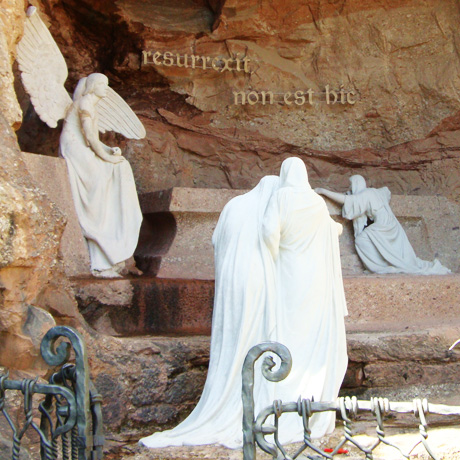
YEAR OF CONSTRUCTION
1903 - 1907
ADDRESS
Porteria del Monestir, Montserrat
http://www.abadiamontserrat.catGaudí also made a contribution to the Monumental Rosary of Montserrat, which is a set of religious sculptures along the path leading from the Monastery to the shrine of the Holy Cave. This project was begun in 1896 and completed two decades later, comprising the construction of fifteen sculptural groups depicting the fifteen mysteries of the Rosary.
The architect took charge of the First Glorious Mystery, which he integrated perfectly in the site formed by a little cave excavated in the rock. Here one may see sculptures by Josep Llimona representing an angel and the Three Marys at the tomb of Jesus. The resurrected Christ appears at the top of the exterior wall.
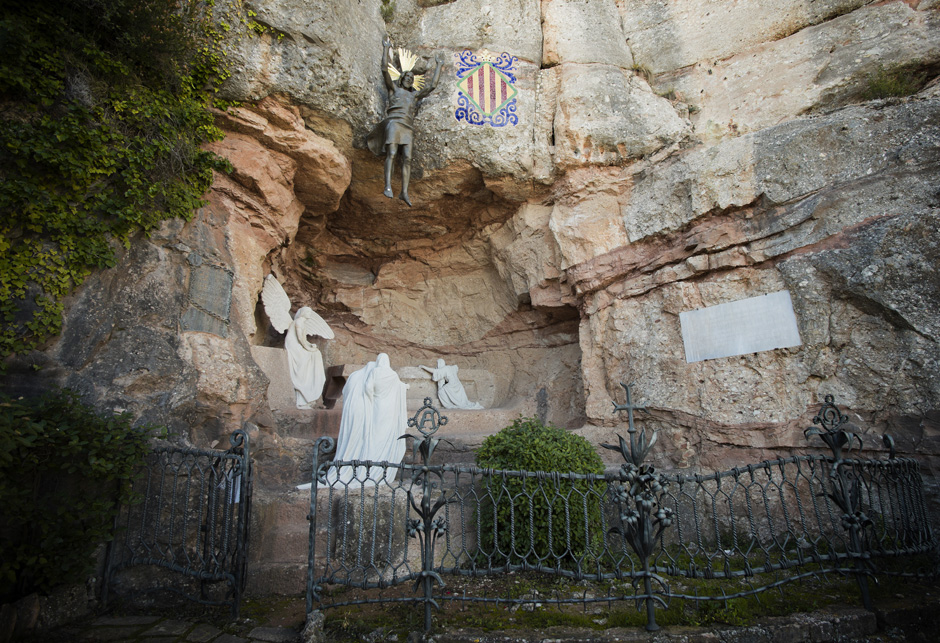
MONTSERRAT AND GAUDÍ: A DIFFICULT RELATIONSHIP
The professional relationship between Gaudí and the Monastery of Montserrat was not always an easy one. While he was still a student, Gaudí collaborated on the works of the Sanctuary and of the new Neo-Romanesque apse as an assistant draughtsman of the person in charge, the diocesan architect Francisco de Paula del Villar. Gaudí did not take part directly in the project of the new chapel set above and behind the high altar, where the Madonna would be placed. The original project, however, would finally be suspended due to the social unrest caused by the third Carlist War.
Gaudí’s second opportunity to work at Montserrat came when his great patron, Count Eusebi Güell, commissioned him to build a funerary pantheon for the Güell family. Gaudí’s idea was to extend the chapel of Our Lady of Sorrows, which had been assigned to the Güells in 1895 on the condition that they would attend to the costs of its restoration and decoration. Unfortunately, the opposition of Villar, who had overseen the interior reform of the church, and the architect’s own ambition, caused the proposal to be turned down.
Third time lucky and Gaudí’s turn finally came when the Spiritual League of Our Lady of Montserrat commissioned him to depict the First Glorious Mystery in the Rosary of sculptural groups that had already been started. The idea was to set up the mysteries along the path following the contour of the mountain which leads pilgrims from the Sanctuary to the Holy Cave where, according to the legend, the image of Our Lady was found in the year 880. Each of the fifteen halts was commissioned to a recognised artist and the resulting work forms the most important outdoor Modernista religious site in Catalonia.
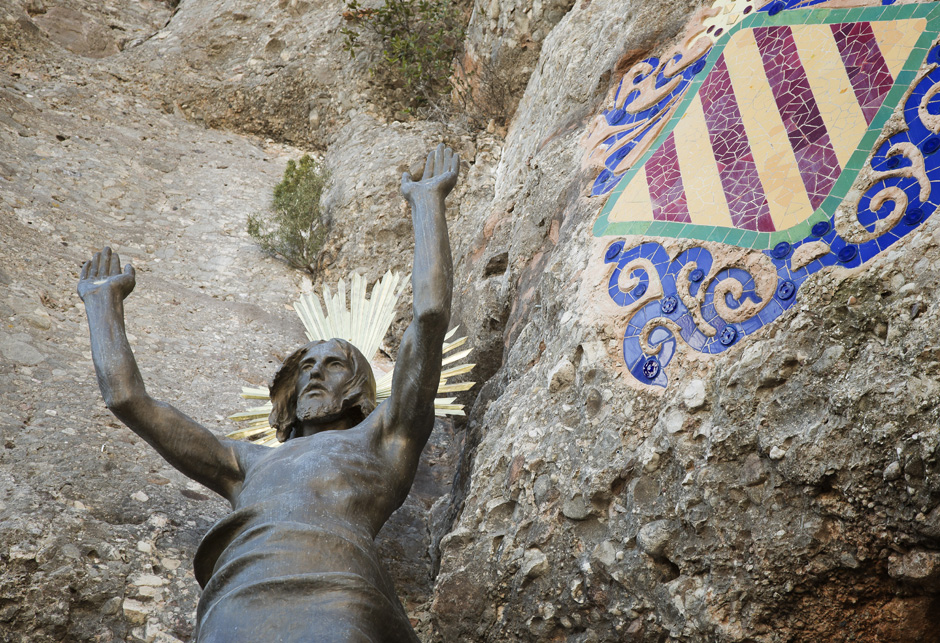
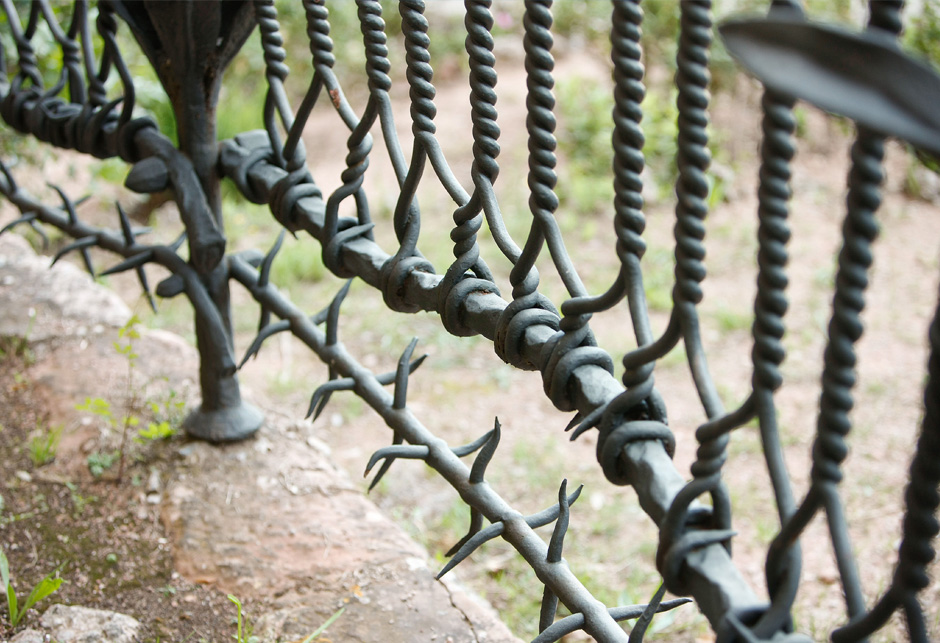
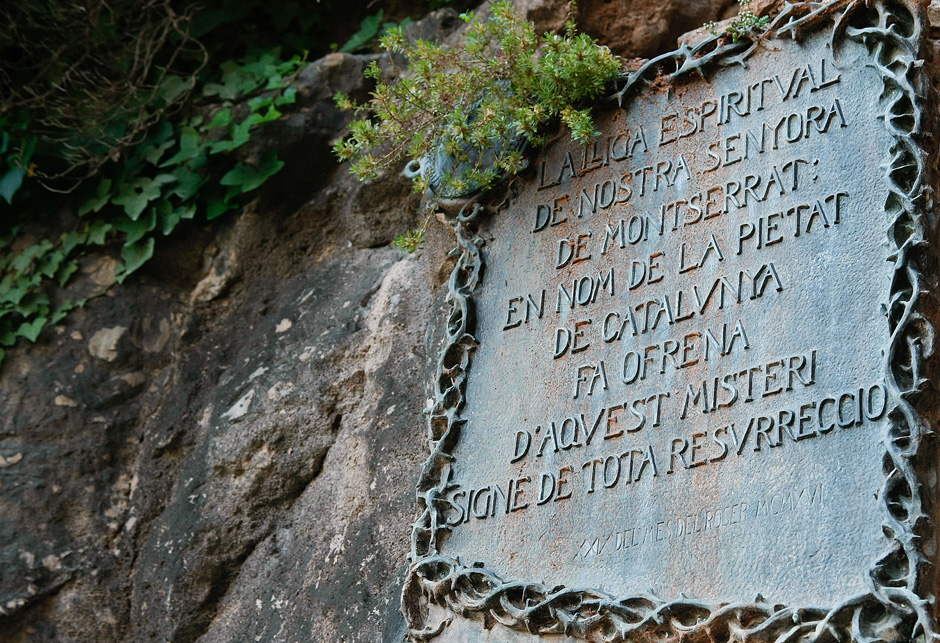
SCENES IN THE STONE
Gaudí studied the spot assigned to him and decided to enlarge a small natural cavity in the mountain as the setting for his work. In order to enhance its appearance and to place viewers in a suitable position to appreciate it, he broadened the existing narrow path along a ledge of the mountain, overlooking a cliff, and built a terrace using stone obtained from the excavation. This containment structure was finished with a stone wall that included a curved bench adapted to the mountain’s profile.
The Mystery figures are set back a little from the path, with the various sequences of the scene set in a staggered arrangement on the ground and in the air: there is the empty tomb guarded by a tall angel announcing the Resurrection, the startled figures of the Three Marys who find the tomb to be empty, and the figure of Christ suspended in the air, flanked by a large coat of arms of Catalonia made of polychrome mosaic. Christ is the only figure made of bronze and a wrought iron handrail separates the scene from the path.
The institution that financed the monument commissioned the sculptures of the angel and of Jesus to Josep Llimona and those of the Three Marys to Dionís Renart, who worked under the supervision of Llimona.
DISTANCED FROM THE PROJECT
In spite of it all, Gaudí’s final participation on the Holy Mountain was not free of the problems which always harassed him. The main trouble involved the delays caused by the progressive reduction of funding. The project started out very promisingly but the enthusiasm of the architect (who was fervently religious) began to fade until he finally delegated the work to his trusted assistants and distanced himself from the work. By that time Gaudí was a professional under great demand, so he had Joan Rubió and Josep Bayó finish the greater part of the Mystery.
The monument was finally unveiled in 1916 and it was completed under the management of another architect, Jeroni Martorell. In 1936 the site was seriously mutilated and it was partly restored ten years later, once the Spanish Civil War was over. Comprehensive restoration works on the monumental site and the conditioning of the path were carried out between 2008 and 2013.
OPENING HOURS:
Outdoor museum. Open all year round. A winding path leading from the Monastery of Montserrat to the Holy Cave runs alongside the monuments and offers panoramic views of the surrounding landscape.
Opening hours of the shrine of the Holy Cave: From 1 April to 1 November, 10:30-17:15 h; from 2 November to 31 March, 11:30-16:15 h
HOW TO GET THERE:
FGC trains: Aeri de Montserrat cable car station (R5 Line) + Montserrat cable car
Monistrol de Montserrat station (R5 Line) + Montserrat rack railway
Timetable of the Aeri cable car: 1 March to 31 October, 9:40-14:00 h and 14:35-19:00 h; 1 November to 28 February, weekdays, 10:10-14:00 h and 14:35-17:45 h, and public holidays and weekends, 9:40-14:00 h and 14:35-18:15 h